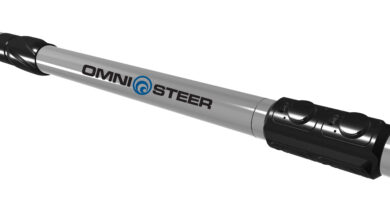Overcoming learning curve leads to successful deployment of dissolvable plugs in Chinese shales
Understanding reasons why dissolvable frac plugs might not dissolve helps suppliers to address operational challenges, provide better operator experiences
By Jack Wang, Vertechs Oil & Gas Technology
Unconventional oil and gas development is on fast track. This is rapidly reshaping the technologies we know and continues to encourage performance, competition and innovation. But a learning curve must be overcome before a new technology can become an industry standard. This article will provide an introductory overview of dissolvable downhole technologies, particularly the challenges and failures that were encountered when they were introduced to the Chinese market in early 2016.
Three years ago, China expanded the scale of its shale gas development. To maximize production, longer laterals were drilled. However, this came with problems, such as wellbore instability, casing damage/deformation and a limited coiled-tubing mill-out safe operating range, along with high mill-out costs using traditional composite frac plugs. Vertechs Oil and Gas Technology saw this opportunity and launched dissolvable technologies focused on well completion.

Traditional composite frac plugs are reliable, but they can be costly to mill out before production. The extended length of laterals being drilled also limit the safe operating range for coiled tubing. Dissolvable frac plugs are designed to dissolve in wellbore fluids after a frac operation, thus eliminating the need for milling.
But let’s imagine that a dissolvable frac plug is sent to the operator. Everything goes well during pumping, setting and fracking, but at the end of the day, it does not dissolve. It’s a nightmare for the supplier.
First, let’s look at what makes dissolvable frac plugs dissolve. These plugs are typically made up of dissolvable materials (dissolvable metal or PGA, which is mainly aluminum-magnesium based materials) and dissolvable elastomers. In the presence of electrolytes (in this case, wellbore fluid), the dissolvable metal is corroded through an electrochemical reaction called galvanic reaction. The rate of reaction is affected by chloride concentration, temperature, the surface area in contact with fluids, and the cathodic concentration of the dissolvable metal.

With that in mind, any of the above factors can be manipulated to control the dissolving rate under a static condition. Critical information is gathered from the operator to simulate the downhole environment in order to ensure that the plugs maintain minimum dissolution until the frac is completed, then begin to dissolve as the downhole temperature recovers. However, the downhole environment and field operation conditions are dynamic.
While pumping the plug and fracking, huge amounts of surface-temperature fluids are injected into the wellbore. Figure 1 shows the downhole temperature is cooled down significantly when the plugs are run in hole. Once the plug has been set, the perf guns are fired and pulled out of hole, then rig-up for frac. During this period, the downhole temperature is recovering. If the frac is delayed, it is best to pump down additional surface-temperature fluid into the wellbore to cool it down, in order to decelerate the dissolving rate of the plug. The downhole temperature is then decreased again as fracking begins. Once the frac is completed, the downhole temperature slowly recovers.
Since dissolvable frac plugs are designed to dissolve during the reheating phase, and the time required for the plugs to dissolve completely is based on that temperature, it is essential to understand that the downhole temperature will recover to a point that will accelerate the dissolving rate. However, the formation temperature recovery rate is affected by pump rate, total amount of fluids injected into the fractures and the size of fractures.
These variables can be different for each treated zone and may cause temperature recovery variations. In other words, there is no way to determine with 100% accuracy when the downhole temperature will recover to the desired temperature for the plugs to be dissolved. This is also the case for the flowback wellbore fluid’s chloride concentration. Due to the above dynamic variations, the chloride concentration of the wellbore fluids can be much lower than expectations and, thus, decelerates the dissolving rate of the plugs.
Apart from temperature and chloride concentration, there are also other influencing factors. Imagine that the plug is firmly set, covered by wellbore fluid (except the parts that are in touch with the casing wall), the composition of the plugs were carefully selected for this particular well’s temperature and chloride concentration, the well is completed and the temperature is recovering from the cooldown effect during frac. So, why won’t it dissolve? What else is in the wellbore that interferes with the dissolving process? The answer is most likely the proppants/sands.
After completing the well, it is shut in. When the fractures are closing, the closure stress can cause proppants to shift and migrate into the wellbore, not to mention that when a screen-out occurs during fracking, operators in China normally flowback the well and try to reestablish a good pump rate. During flowback, it is very likely that proppants in the lower zones are migrated from the fractures into the wellbore and form a sand pack at the plug, isolating it from the wellbore fluid.
It may be argued that proppants are permeable, like sand on a beach. If you reach into it with your hand and pull it out, it is wet. Even if the plug is entirely covered with proppants, it is still in contact with wellbore fluid. This is an unfavorable condition for the plug, as it may not be completely isolated from the wellbore fluid, but its dissolving rate will be impacted.
Vertechs tested this theory by placing a chunk of dissolvable metal into a pup joint, filled it with sand and flowback fluid, then heated it up and pressurized it to simulate the downhole environment. Although the figures will be different in actual wells, the results were as expected. In this case, the dissolving rate was reduced by 57% compared with another metal sample that was not covered with sand.
In other field applications, it has also been proven that these cases of plugs not dissolving completely were caused by sand pack at the frac plug that interfered with the dissolving process. The company collected several large pieces of dissolvable metal from the junk catcher after flowing back the well for 20 days. With these debris, dissolving tests were conducted using the flowback fluid from the same well under 60% downhole temperature. All debris dissolved completely in less than 20 hours. These test results matched previous hypotheses and test results.
Overcoming Skepticism
Learning has continued over the past three years. By deepening the understanding of operational requirements, improvements have been made. Coating technologies have been used on dissolvable frac plugs to counter premature dissolution when pumping with flowback fluids. Solutions have been provided for casing ID restriction challenges, and there has been close collaboration with operators to plan flowback schemes that bring their wells into production more quickly.
It is essential to optimize the mechanical and chemical balance of the (dissolvable frac plugs) in order to master the learning curve.
For a dissolvable frac plug provider, it is essential to optimize the mechanical and chemical balance of the products in order to master the learning curve. In 2018, after multiple setbacks and challenges, more than 3,000 sets of WIZARD dissolvable frac plugs were run in hole successfully in China. The operators used these frac plugs throughout the horizontal laterals (20-35 stages per well) with zero failures, replacing composite frac plugs from their operation and significantly reducing costs and operation hours. DC




